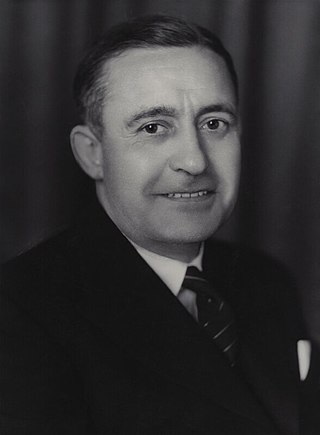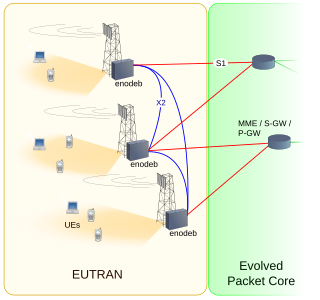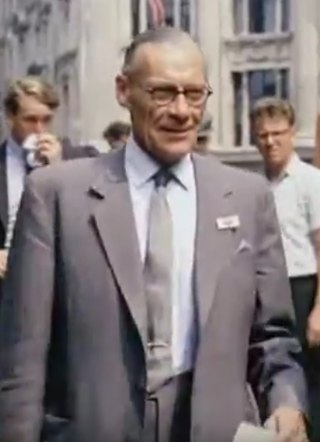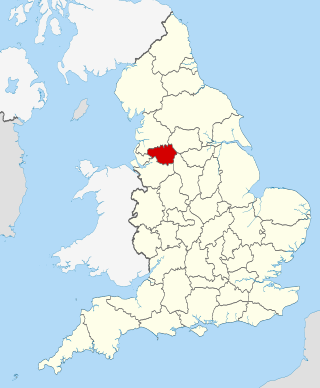LTE may refer to:
LTE may refer to:

The history of public transport authorities in London details the various organisations that have been responsible for the public transport network in and around London, England - including buses, coaches, trams, trolleybuses, Docklands Light Railway, and the London Underground.
4G is the fourth generation of broadband cellular network technology, succeeding 3G and preceding 5G. A 4G system must provide capabilities defined by the International Telecommunication Union (ITU) in IMT Advanced. Potential and current applications include amended mobile web access, IP telephony, gaming services, high-definition mobile TV, video conferencing, and 3D television.

Charles Latham, 1st Baron Latham (1888–1970) was a British politician and Leader of the London County Council from 1940 to 1947.

The regional chambers of England were a group of indirectly elected regional bodies that were created by the provisions of the Regional Development Agencies Act 1998. There were eight regional chambers, one for each of the regions of England except Greater London, which had opted for an elected mayor and assembly in 1998. All eight regional chambers had adopted the title "regional assembly" or "assembly" as part of their name, though this was not an official status in law. The chambers were abolished over a two-year period between 31 March 2008 and 31 March 2010 and some of their functions were assumed by newly established local authority leaders' boards.

A cellular network or mobile network is a telecommunications network where the link to and from end nodes is wireless and the network is distributed over land areas called cells, each served by at least one fixed-location transceiver. These base stations provide the cell with the network coverage which can be used for transmission of voice, data, and other types of content. A cell typically uses a different set of frequencies from neighboring cells, to avoid interference and provide guaranteed service quality within each cell.
Rogers Wireless Inc. is a Canadian mobile network operator headquartered in Toronto, providing service nationally throughout Canada. It is a wholly owned subsidiary of Rogers Communications. The company had revenues of just under $15.1 billion in 2018. Rogers Wireless is the largest wireless carrier in Canada, with 13.7 million subscribers as of Q2 2023.

Evolution-Data Optimized is a telecommunications standard for the wireless transmission of data through radio signals, typically for broadband Internet access. EV-DO is an evolution of the CDMA2000 (IS-2000) standard which supports high data rates and can be deployed alongside a wireless carrier's voice services. It uses advanced multiplexing techniques including code-division multiple access (CDMA) as well as time-division multiplexing (TDM) to maximize throughput. It is a part of the CDMA2000 family of standards and has been adopted by many mobile phone service providers around the world particularly those previously employing CDMA networks. It is also used on the Globalstar satellite phone network.

StarHub Limited, commonly known as StarHub, is a Singaporean multinational telecommunications conglomerate and one of the major telcos operating in the country. Founded in 1998, it is listed on the Singapore Exchange (SGX).

E-UTRA is the air interface of 3rd Generation Partnership Project (3GPP) Long Term Evolution (LTE) upgrade path for mobile networks. It is an acronym for Evolved UMTS Terrestrial Radio Access, also known as the Evolved Universal Terrestrial Radio Access in early drafts of the 3GPP LTE specification. E-UTRAN is the combination of E-UTRA, user equipment (UE), and a Node B.
The London Transport Executive was the organisation responsible for public transport in Greater London, England between 1948 and 1962. In common with all London transport authorities from 1933 to 2000, the public name and operational brand of the organisation was London Transport.
The London Transport Board was the organisation responsible for public transport in London, England, and its environs from 1963 to 1969. In common with all London transport authorities from 1933 to 2000, the public name and operational brand of the organisation was London Transport.
System Architecture Evolution (SAE) is the core network architecture of mobile communications protocol group 3GPP's LTE wireless communication standard.

LTE Advanced is a mobile communication standard and a major enhancement of the Long Term Evolution (LTE) standard. It was formally submitted as a candidate 4G to ITU-T in late 2009 as meeting the requirements of the IMT-Advanced standard, and was standardized by the 3rd Generation Partnership Project (3GPP) in March 2011 as 3GPP Release 10.
In telecommunications, long-term evolution (LTE) is a standard for wireless broadband communication for mobile devices and data terminals, based on the GSM/EDGE and UMTS/HSPA standards. It improves on those standards' capacity and speed by using a different radio interface and core network improvements. LTE is the upgrade path for carriers with both GSM/UMTS networks and CDMA2000 networks. Because LTE frequencies and bands differ from country to country, only multi-band phones can use LTE in all countries where it is supported.
The transport system now known as the London Underground began in 1863 with the Metropolitan Railway, the world's first underground railway. Over the next forty years, the early sub-surface lines reached out from the urban centre of the capital into the surrounding rural margins, leading to the development of new commuter suburbs. At the turn of the nineteenth century, new technology—including electric locomotives and improvements to the tunnelling shield—enabled new companies to construct a series of "tube" lines deeper underground. Initially rivals, the tube railway companies began to co-operate in advertising and through shared branding, eventually consolidating under the single ownership of the Underground Electric Railways Company of London (UERL), with lines stretching across London.

Sir Alexander (Alec) Balmain Bruce Valentine OStJ MA, was Chairman of the London Transport Executive from 1959 to 1963 and Chairman of the London Transport Board from 1963 to 1965.

The Greater Manchester Combined Authority (GMCA) is a combined authority for Greater Manchester, England. It was established on 1 April 2011 and consists of 11 members; 10 indirectly elected members, each a directly elected councillor from one of the ten metropolitan boroughs that comprise Greater Manchester, together with the directly elected Mayor of Greater Manchester. The authority derives most of its powers from the Local Government Act 2000 and Local Democracy, Economic Development and Construction Act 2009, and replaced a range of single-purpose joint boards and quangos to provide a formal administrative authority for Greater Manchester for the first time since the abolition of Greater Manchester County Council in 1986.
Ralph Featherstone Bennett FIMechE, FCILT, FRSA was a British transport administrator who was general manager of Manchester City Transport from 1965 to 1968 and chairman of the London Transport Executive from 1978 to 1980. Bennett introduced one-man operation to buses in Manchester and London and promoted London Underground's extension of the Piccadilly line to Heathrow Airport and the construction of the Jubilee line.
Sir Keith Bright was Chairman of London Regional Transport in the 1980s. He resigned following the Fennell Report into the King's Cross fire in 1988, that criticised the management of London Underground and London Transport.